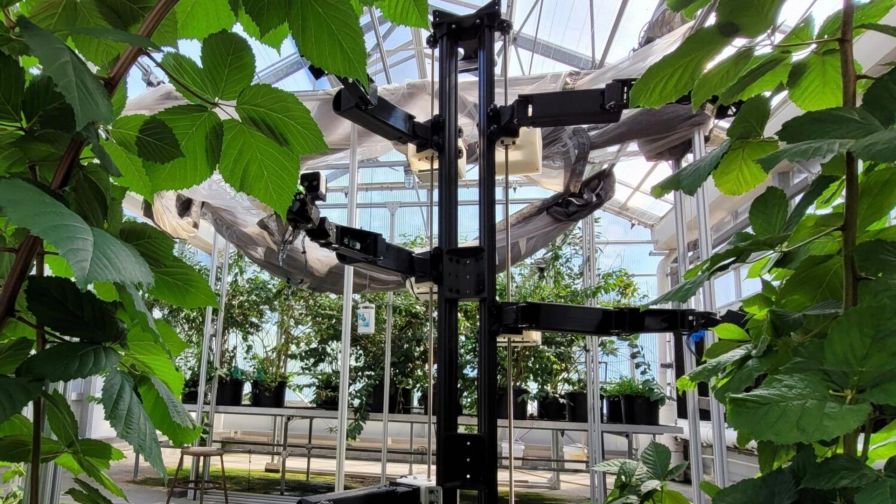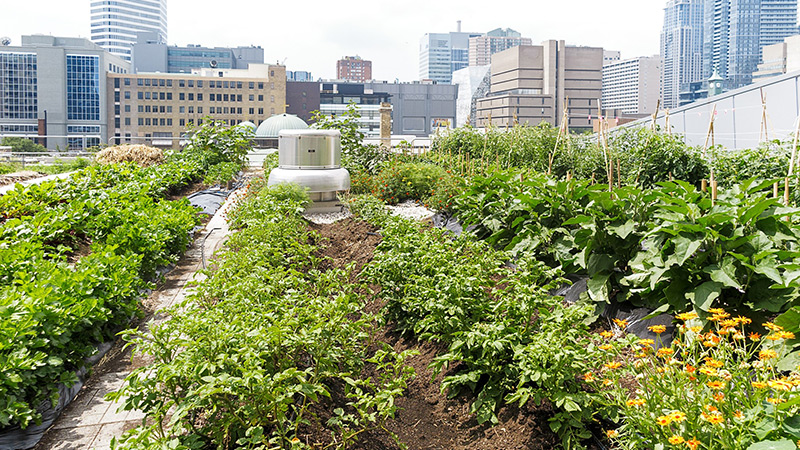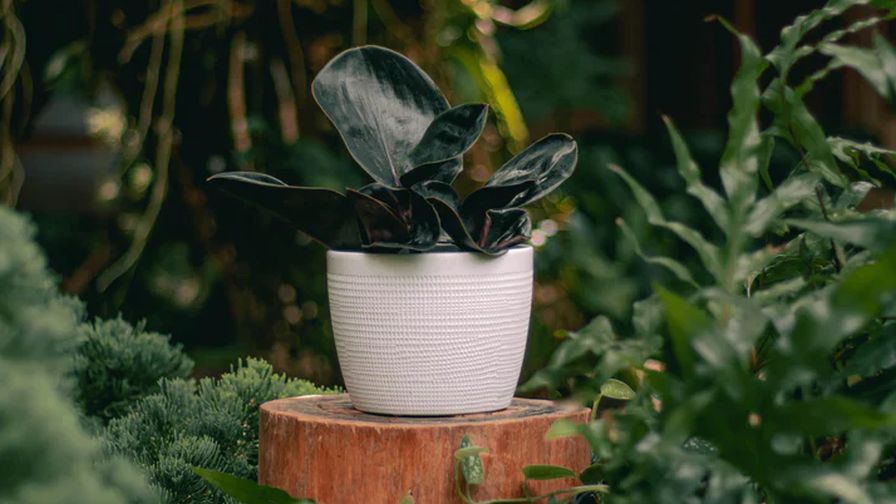Today’s Cyclamen Take the Heat

Cyclamen don’t have to be relegated to just gift plants anymore. The Indiaka series from Morel Diffusion is one of the newer varieties turning heads in the landscape. Photo: ‘Indiaka Rose’ (Morel Diffusion)
Has the moment arrived for cyclamen to shine? The plant that suspends vivid red and brilliant white flowers over a mound of eye-catching foliage has been a long-time tender and pretty houseplant for consumers at Christmas and on Valentine’s Day as the flower of true (sincere) love. But it’s not your grandmother’s cyclamen anymore.
Indeed, the Morel family of cyclamen breeders began tending and selling their crop of cyclamens in central France 100 years ago. By the 1970s, the F1 cyclamen hybrids emerged, offering a stronger, more robust plant that was better able to handle diseases, appear more uniform in shape, and very often was faster to flower. Today, there’s plenty of dazzling new cyclamen varieties being offered that are anything but typical. Not just when it comes to color, flower size, and foliage, plants are also selected to meet the challenging conditions of everything from outdoor use to the heat in a greenhouse.
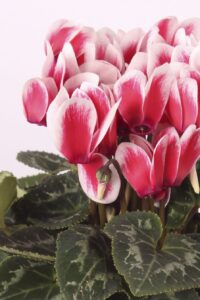
Today’s cyclamen are anything but typical with bold new bi-colors and marbled leaf types, such as is seen here in ‘Merita Shine Red’ from Syngenta Flowers.
Adjusting for Climate Change — Hot and Cold
Top breeders readily admit cyclamen can be a tricky and challenging plant to produce in a greenhouse.
“But if you’re able to grow cyclamen successfully, it’s a really rewarding plant,” says Mike Murgiano, Head of Product Management and Crops at Syngenta Flowers, which has been breeding cyclamen since the 1970s.
Before climate change became an issue, he says, “we’ve always recognized that heat has been a limiting factor to growing” successful cyclamen in a greenhouse.
In a hot climate, for example, watering is key, says Guy Schertzer of Morel Diffusion (France), which partners exclusively with Ball Seed in North America.
“[Cyclamen] is very robust, very solid, but it has thin, sensitive roots,” he says. “If you overwater it once or twice, the third time it will show it to you a couple of weeks later, and not in a pleasant way.” He says cyclamens are not drought tolerant.
Instead of an ebb-and-flow bench approach, Schertzer recommends drip irrigation to water cyclamens “to a minimum, not to a maximum,” which makes a “huge difference on the plant quality.”
Cyclamen are trialed worldwide in hot climates like Turkey, southern France, and California.
“We’ve been breeding more heavily for varieties that can take more heat,” Murgiano says, particularly among larger standard-sized cyclamens used in landscapes. “When you overcome heat stress, you not only get products that are easier for growers, but they last longer for consumers, whether it’s in the home or in their garden.”
A Plant for the Outdoors
For the outdoors, Kathy McKay of Schoneveld Breeding calls cyclamen “a long-lasting flower that doesn’t require a lot of care.”
She points to the foliage on two series (Leopardo and Elegante), which have been bred for heat tolerance and feature a more open habit — hence, better airflow. She says it’s not only a good trait for hot conditions, but “you can overhead water easier as well, which is how people typically do it in the U.S.” McKay says the company favors silver foliage for their outdoor cyclamen series, “because silver reflects the heat.”
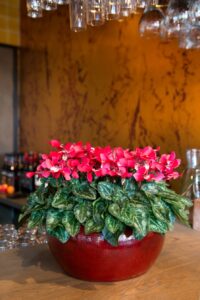
Specialty products such as Super Serie Djix, with its downward-facing petals and unique flower shapes, have opened a whole new world of modern-day cyclamen to consumers. Photo: Schoneveld
When the temperature drops, today’s cyclamen can also tolerate a little bit of a frost, Murgiano says, as outdoor landscape use continues to increase in more northern parts of the U.S. This makes them ideal for spring containers. He reports seeing cyclamen thriving in planters in downtown Chicago.
“You know, into June and July, it’s like, ‘wow,’ cyclamen in Chicago,” Murgiano says.
Disease Concerns
Breeders fine-tune cyclamen colors to make a difference in disease resistance. Pure white (or paper white) cyclamen tends to have thinner petals than creamier white cyclamen, making it more susceptible to botrytis blight (Botrytis cinerea).
“We’re trying very hard to bridge that gap,” Murgiano says, “to get a pure white, which is what everyone wants, but that has the stronger flower.”
The many months required for raising cyclamen in the greenhouse (six to nine months) means growers can’t afford not to pay attention to conditions such as appropriate spacing (leaves shouldn’t touch), adequate air flow, and really good hygienic growing conditions to keep Fusarium, Botrytis, Anthracnose, Pythium root rot, and other diseases at bay.
“Once it starts going, you’ve got to get it out of there, or it will take over your crop in no time flat,” McKay says.
If cyclamen isn’t your main crop, Murgiano says it’s smart to start with seedlings from a reputable plug producer, which will “get you through a lot of the difficulties from a production perspective.”
New Varieties that Dazzle
Thanks to many years of breeding, cyclamen flowers now come in micro, mini, midi, medium, and large sizes. They sport vivid, consistent colors that won’t fade.
“We have a huge offer in reds because it’s the number-one color still worldwide,” Schertzer says.
Morel has well over 200 distinctly different colors and more than 500 cyclamen growers for Ball Seed in the U.S. that grow many of them. Head of New Product Development for Ball Ingenuity Joan Mazat says Morel works hard to “stay on trend with cyclamen colors.” Their Halios lavender cyclamen, for example, echoes Pantone’s “Very Peri” color for 2022.
Morel developed Dreamscape for landscape architects, a cyclamen with a mid-sized flower, a very intensive and long-holding red color, and a longer stem that can be seen well from a distance. Mazat says the Indiaka cyclamen series is turning heads with specially marked tags and its distinct two-tone flowers.
A specialty variety by Schoneveld called Djix “has transformed how people look at cyclamen … and is a freak of nature,” McKay says, because the flowers have a unique shape with downward-facing petals.
“It’s just cute and fun. It gets a ton of flowers and [consumers] feel successful.
A compact version called Merita by Syngenta Flowers has a longer shelf life, Murgiano says. He’s also excited about their Shine varieties within this series that have distinct bi-coloration and a strong white edge.
As Mazat says, fortunately for all of us, “the breath of fresh air keeps getting breathed into cyclamen.”






